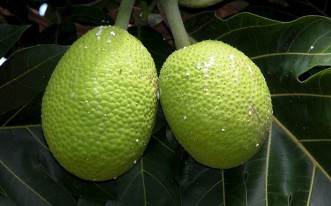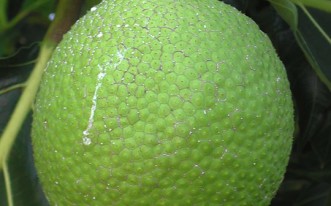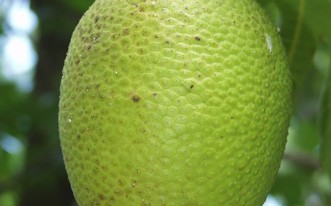
OVERVIEW |
|
|
A traditional staple of Pacific Island agriculture for more than 2,000 years, the varieties we offer have been selected from the 120 varieties in the Breadfruit Institute’s collection for their superior growth, adaptability and fruiting characteristics. Producing viable fruit in 2-3 years, they are significantly more resilient than conventionally propagated trees and are not genetically modified (non-GMO). GROWING BREADFRUIT Sold as young plants or plugs, these healthy and vigorous starter plants require 3-6 months in a nursery setting under 50% shade before being planted in an orchard or grove setting. This time period is critical to building a strong young tree that can withstand the environmental stress of the transition period. Regular fertilization and watering is critical to the success of these young plants and they will require daily inspection and care. PLANTING: 1-2 gallon pots are best for planting. The plants should be planted slightly deeper in the pot than they are growing in the plug. The soil in the pot should cover the top of the plug by 1-2 centimeters at planting. Water the plants thoroughly several times after planting to make certain the soil is soaked all the way through the pots. |
SOIL/GROWING MEDIA: The right soil/growing media is critical for success in growing your breadfruit plantlets. A well-drained and light nursery mix is ideally composed of composted bark, peat moss or coconut coir and perlite. It should be light and airy but heavy enough to weigh the plants down. Field soil is unacceptable in a pot. If professional growing mixes are not available in your area, please email us for information on how best to proceed. FERTILIZER: Regular fertilization with a time-release fertilizer like Osmocote or a water-soluble fertilizer with an analysis that is balanced 10-10-10 or 20-20-20 is suitable and the dosage of 500 ppm once per week will produce strong growth. WATER: The main cause of death among young breadfruit plants is drying out. They should be monitored daily to make sure the plants are growing well and that all the soil is evenly moist. Best practice is to water early in the morning and check the plants after midday to see if they have dried out. If they have, a thorough watering of the dry plants is required. Disease issues are generally not a problem if the above protocols are followed. |




